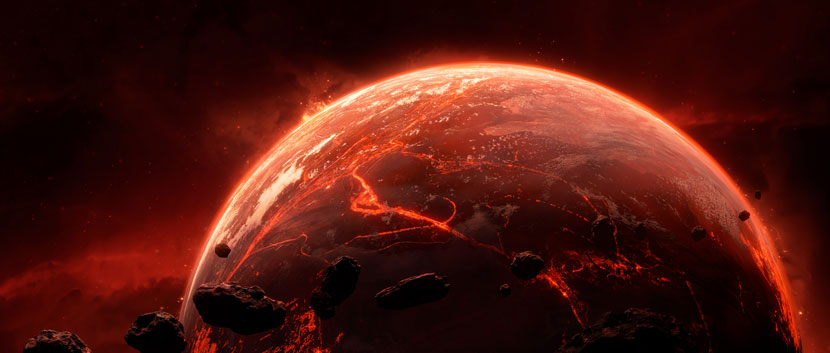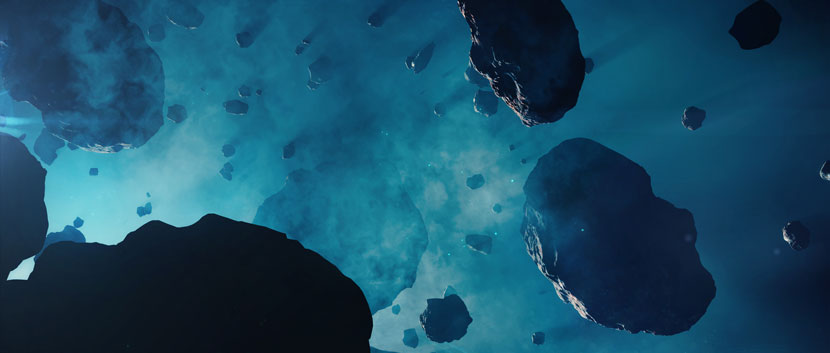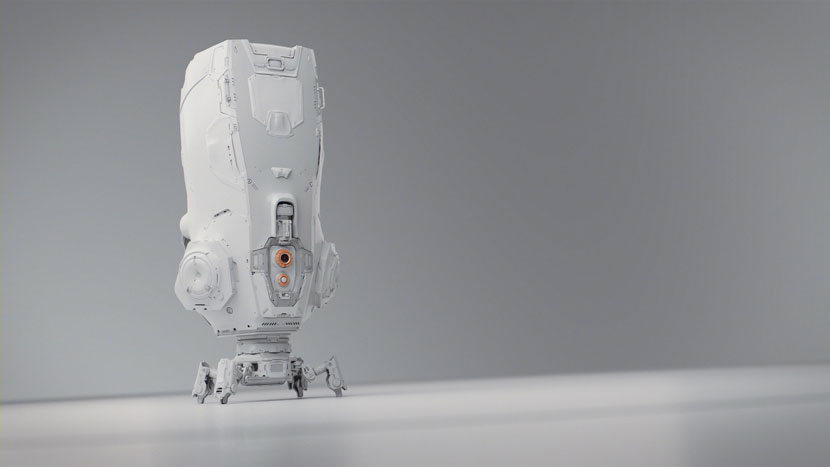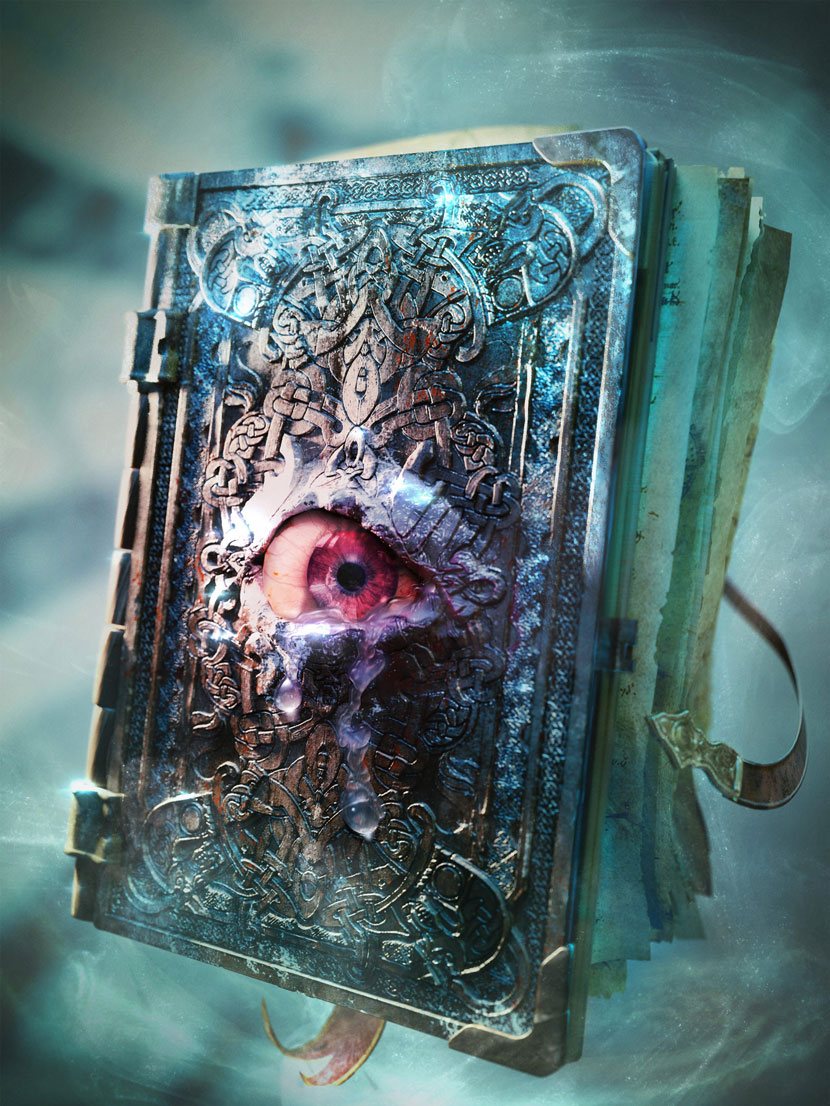Thursday, February 21st, 2019 by Julian Karsunky

What do creative crustaceans, caffeine and rubber ducks have in common? Simple: They all blend together in the brand CG artist and educator Gleb Alexandrov has successfully built from the ground up over the last years. A vocal proponent of open-source software, Gleb focuses on content creation centered on the free 3D software Blender. His vast knowledge, shared in the form of videos and tutorial courses, continues to benefit countless aspiring 3D artists worldwide.
We once again had the pleasure to sit down with Gleb and talked about digital freedom, content creation and his recent push in game development.
 The first chapter in an ongoing success story, Gleb made these wet shoes for his Realistic Lighting in Blender video course.
The first chapter in an ongoing success story, Gleb made these wet shoes for his Realistic Lighting in Blender video course.
Hi Gleb, we’re thrilled to have you once again! For those that somehow still are unfamiliar with you and your work, can you please briefly reintroduce yourself to our readers?
I’m a coffee maniac and pixel pusher, who runs the Creative Shrimp website and a YouTube channel for those who want to get better at computer graphics and art. I’m a huge fan of open-source software and digital freedom. Recently, rubber ducks have become a significant part of our brand, and I have no idea how that happened.
Since we last spoke in May 2016, your brand has only grown bigger and more successful. What have you been up to these last years?
The Realistic Lighting course released in May 2016 had a pretty successful first week, followed by a long tail of sales. The passive income covered my expenses for some time and I was unchained from having to search for freelance work. So I’ve been making tutorials, more tutorials, and eventually we collaborated with Aidy Burrows to put together what we initially thought would be a conventional modeling course. However, Aidy subverted the original plan by coming up with the Space VFX idea. Naturally, we were all over that, because space is awesome, Falcon X landing and everything.
To our surprise, SpaceVFX became a blockbuster on Gumroad and later on BlenderMarket as well. On a side note, BlenderMarket had really matured by then and became super attractive to us. So after that, we’ve been busy reading Superyacht World…I mean planning the next course. Obviously, the modeling idea made a comeback and six months later Hard-surface Modeling in Blender was out.
Since then, we’ve been completely free to do whatever the hell we like. So we decided to try our hands at gamedev. We also felt like starting a company, so we set up Vertstretch, a limited company in the UK. So far, it has been the zoo for specimens from our laboratories and a legal entity for business stuff.
 The Space VFX Elements video course Aidy Burrows and Gleb developed together, teaches how to create assets such as this beautiful lava planet in Blender.
The Space VFX Elements video course Aidy Burrows and Gleb developed together, teaches how to create assets such as this beautiful lava planet in Blender.
Half a year ago, you broke 100k subscribers on YouTube, congratulations on this impressive feat!
Oh yeah! Love it, really exciting. I’m amazed by how people react to our videos; it feels like you’re surrounded by friends all around the world. Nerdy friends, who also enjoy pixel pushing.
When I started producing videos four years ago, I didn’t expect it to blow up like this. Well, if we put these numbers in context, 100k is not that bombastic, but it’s still a big deal to me. I remember receiving the first bunch of comments under the proportional falloff video, after Bart [Veldhuizen, founder of BlenderNation, editor’s note] posted it on BlenderNation, thinking, “Hey, I might be onto something here!”
Can you talk about what content creation means to you as a whole?
I make things because it’s my mode of self-expression and, of course, I make a living doing so.
Throughout my life, I’ve always been producing audio-visual content one way or the other: filming video, playing guitar in a rock band, writing for a newspaper or modeling at a gamedev studio. Maybe I’m just wired this way.
What, in your experience, is the key to success in curating your own content?
Self-awareness. Ask yourself, do you have an idea what you want to do within the next year, or the next five, or even ten years? What kind of lifestyle do you want to communicate? Who is your target audience? What problem do you want to solve? Are you into rubber ducks or not?
The key to curating your own content is self-awareness!
In the age of social media and video sharing sites, the presentation of content seems to be more important than ever.
Marshall McLuhan’s phrase, "the medium is the message", holds true in today’s world more than ever. The medium really defines what kind of content you make and how you present it. Youtube, for example, obviously pushes you to think as a video maker. That means using visual narration techniques like talking heads, cuts, live footage, motion graphics, acting and so on.
Now because Youtube has a comment section and other social stuff, you naturally end up embedding these things into your content. In the end, that makes the viewers part of the creative process. Formats such as Q&A or art review revolve around user-generated content, so you’re playing co-op.
How much does personality factor in your success in fostering an active online community?
I think no matter what type of personality you possess, it can be an asset. As Gary Vaynerchuk and other entrepreneurs point out, such traits as vulnerability, shyness or indecisiveness are great for fostering an online community. As long as people can relate to your personal brand and the ideas you represent, it’s going to work. There are countless alternatives to the overly ambitious, career-oriented way of thinking.
For example, I love the slogan of Emilie Wapnick’s website, Puttytribe: “Get the support you need to build a life around ALL your interests.” That’s basically an ode to what she refers to as multipotentialites: people who aren’t committed to one profession, but look to integrate their different passions into their lives. In a sense, Emilie’s personal brand embraces what others might look down upon as indecisiveness, and as you can see, people love it.
 Because space is awesome: This asteroid belt is another asset from the Space VFX Blender tutorial.
Because space is awesome: This asteroid belt is another asset from the Space VFX Blender tutorial.
What is your opinion on being called an ‘influencer’?
Being called an influencer means having enough gravitas in certain media circles to sway public opinion. Or maybe even influencing people’s lives in a more literal sense. It’s funny when you think about it: We’re at the beginning of the post-industrial society and we can already do so many things that were almost exclusively reserved to big institutions and companies for the longest time: We can broadcast to millions, create new means of production such as open-source software and kick-start viral memes. It’s so crazy; everyone can be an influencer nowadays, at least in theory.
I’m so hyped when people reach out to tell us how our video courses affected their lives. Someone landed a job at a cool animation studio. Someone else made the transition from a job that they hated to painting unicorns and making a living from that. I feel like, “Damn, that’s some real impact!”
You come across as very authentic and relatable on screen, which might overshadow the amount of work that goes into producing content. How much thought, maybe even calculation, goes into your online presence?
Building an online presence is hard. I enjoy it very much though. The hardest thing for me personally was to make the switch to spoken tutorials, since I started by making a bunch of visual-explainer-style tutorials. My English never seemed sufficient to me, but ultimately, I just tricked myself to “fake it till I make it”.
I don’t think that being authentic and taking the cool, calculating approach of a supervillain are mutually exclusive. However, I do think that the best plan is usually the simplest one.
What will I do if my business idea won’t fly? What is our plan B? How should we plan a paid cross-promo campaign ten steps in advance for a product, which hasn’t left the pen-and-paper phase? It’s easy to overthink. Don’t overthink! It’s impossible to have all the answers, so instead, focus on making something that you and other people would enjoy.
Is there a notable difference in how you approach different kinds of content, say a comprehensive tutorial compared to a podcast-style video?
Surprisingly, there are similarities in how I approach any kind of content. It doesn’t matter if it’s a comprehensive tutorial, a vlog, a game prototype or a medieval ballad – I always begin by writing down the production road map notes. When we work together, it’s like one big, collective mental dump. It helps to articulate ideas, that’s important!
I know it might sound bureaucratic, but it all starts with a Google document. Once we brainstormed the hell out of it, we start arranging ideas in some sort of hierarchy: Title, chapters, sub-chapters, all that stuff. Then, you can free your operative memory to load in the actual work, without having to worry about the structure. Let paper keep track.
Contentwise, how do you walk the tight line between entertainment and information?
I like to call it infotainment. Some kind of balance is already inherent to this term, right? If you lean towards one aspect too much, it’s no longer infotainment.
It’s such an interesting subject though, you know? If we consider information to be the storyline, than entertainment would be the narration – how you tell the story, so to speak. The narration, then, can either line up with the story or run contrary to it, you decide! You aren’t chained at the ankle to a pipe, like the characters in ‘Saw’. If the entire narrative tilts, but you still deliver an enjoyable performance, maybe it’s worth giving a shot?
Let’s talk about CG software and its accessibility!
Blender! Everybody, get Blender, seriously. It’s a game changer in the world of visual content creation and this will only become more evident as time goes by. You said accessibility. We might also say inclusion, which is one of the big trends of our times. Whether it’s the inclusion of previously voiceless groups in politics or involving consumers in the sphere of production. In my opinion, Blender is gaining steam not only because it’s cool, but also because it’s so accessible, which, again, perfectly aligns with a powerful trend.
Besides Blender, is there a piece of software, whether proprietary or open-source, that has impressed you recently?
Other than Blender, I’ve recently been impressed with PureRef, MyPaintApp and Meshroom.
Pureref is a cross-platform free tool for viewing and organizing reference images. It’s borderless, has the Always-On-Top button and much more.
MyPaintApp: How this free painting app simulates canvasses and brushes is beyond awesome.
Last, but not least, the free photogrammetry app Meshroom is super versatile in terms of choosing different reconstruction algorithms and more.
What currently available software would you recommend to a complete newbie looking to produce their first piece of 3D art?
I often recommend trying something that results in a fun experience immediately, for example Sculptris, or, even better, SculptGL. SculptGL works directly in your browser, so there’s no entry barrier at all. Sculpting is fun, and it’s perfect if the point is to get something done quickly.
Beyond that, I’d say go for Blender. The more beginner-friendly interface of version 2.8 and left mouse button select have made it even more attractive. That being said, the learning curve is still pretty steep.
Nowadays, there is an abundance of resources at the tip of your fingers, which can be a bit overwhelming to an outsider. Do you have any tips on how to navigate the vast world of online tutorials?
Learning how to navigate the online landscape is a must-have skill. I’m tempted to say, just go down the rabbit hole. It’ll start making sense after a while!
Actually, I think that the YouTube search recommendation algorithm is quite good. Once it has sniffed out that you’re interested in online tutorials, it spams you with this type of videos. The world around you becomes one big stream of 20 Modeling Tips, Andrew Price’s videos, Udemy ads and other, hopefully relevant content.
With so many successful CG artists being self-taught, is there still a need for formal education?
I think that CG art is one of the professions that don’t require formal education. As you said, the abundance of resources makes it relatively easy to educate ourselves. As you know, free sharing of knowledge is an integral part of the CG art community. What a time to be alive!
In our exchange leading up to this interview, you already hinted at some exciting developments in regards to game development. Can you elaborate a bit on this, what business ventures can we expect from you in the near future besides tutorials?
That’s right, we are currently developing a game prototype with Aidy. It’s a crash test dummy undertaking, meaning we’re totally fast tracking the learning process, like Neo in ‘The Matrix’. We started by putting together simple core mechanics for a top-down running game where you have to avoid dangerous foes – imagine ‘Pacman’ meets ‘Asteroids’. As usual, the idea started to evolve both gameplaywise and aesthetically. Resource management and character upgrades found its way into the prototype. That’s the influence of roguelikes like Below and Faster than Light, I guess. Have I mentioned that the action takes place on an alien planet and you control a repair drone?
Of course, we also look forward to transform this experience into a course. We already have so much to share: Creating low-poly assets for games. Prototyping your first game in Blender and Unreal. That’s the best part of the job: learning new tools and techniques and sharing this knowledge.
Other than that, we have dozens of other ideas as you might have expected. Assets? New tutorials? Photogrammetry? Game ideas? Yes to all of the above!
Do you still find time to work on your own CG projects? What was the last piece you finished?
It’s been a while since I pulled off a full-fledged render, maybe around half a year? A bunch of renders for the Hard-surface Modeling course was the most recent thing I did. However, I’m significantly madder that I didn’t speak at the Blender Conference 2018. I blame my laziness more than my lack of time.
My daily routine involves working on CG projects and all of these projects are our own. The game MVP (minimum viable prototype) is one of them and it involves look development as well as game design and coding. Other than that, I churn out lots of minor pieces of visual content, but that’s an “invisible part of the iceberg” situation, I guess.
 Despite his busy schedule, Gleb still finds the time for his own creative CG output. This little automaton was made for the Hard-surface Modeling tutorial.
Despite his busy schedule, Gleb still finds the time for his own creative CG output. This little automaton was made for the Hard-surface Modeling tutorial.
You’re a big proponent of the open-source movement and digital freedom in general.
Open-source and digital freedom mean a lot to me, indeed. I live in Belarus, but I’ve always wanted to be a world citizen. It sucks to decline the invitation to Siggraph just because it’s difficult to get a US visa. Maybe that’s why I see digital space as an opportunity to operate worldwide.
That said, I’m working on solving visa and residency puzzles offline as well and already have had some success on this front. EU countries are available to my family and me, and as I’ve said, we recently set up our company in the UK. I’m one of the most pragmatic nerds you’ve ever met.
In light of recent worrying developments and attempts to limit this freedom all over the world, can you talk a bit about your stance on this matter?
I honestly wouldn’t worry too much about digital freedom. If political science is right, the big trends are irreversible. Nobody can roll back progress. There might be some hiccups here and there, sure, but in the grand scheme of things, these don’t amount to much more than drops in the ocean. Two of the big trends of today are freedom of information and decentralization. So even in the face of garbage like national firewalls, the EU Article 13 meme ban, link tax and more, I choose to remain optimistic.
What can we do to protect or advance the free internet?
While I’m not an expert in this field, I’d say decentralization and a continuous exchange of both material and immaterial goods in the online communities is a way of strengthening horizontal ties and thus advancing the free internet. In short, talk more, share more and exchange more.
 Fueled by coffeine, Gleb produced this magical book in just five days. Maybe it contains the secret to the mysterious rubber ducks?
Fueled by coffeine, Gleb produced this magical book in just five days. Maybe it contains the secret to the mysterious rubber ducks?
Do you often use render farms? What is your opinion on RebusFarm and cloud rendering in general?
I think render farms are great when you work under the pressure of a tight deadline. In fact, it can be a game-changer. Personally, I usually try to render everything on my own, but sometimes I feel like I should really distribute that load and focus on things more important than watching render buckets.
In closing, is there anything else you want to say? Any present or upcoming projects you’d like to mention?
Drink more coffee and together, we’ll change the world of computer graphics.
Keep up with Gleb Alexandrov and his work here:
>> Read more articles on our blog
